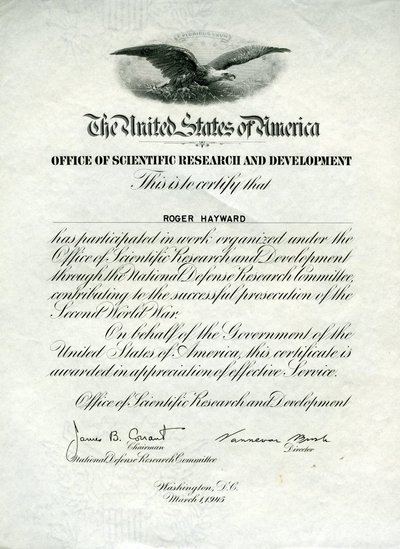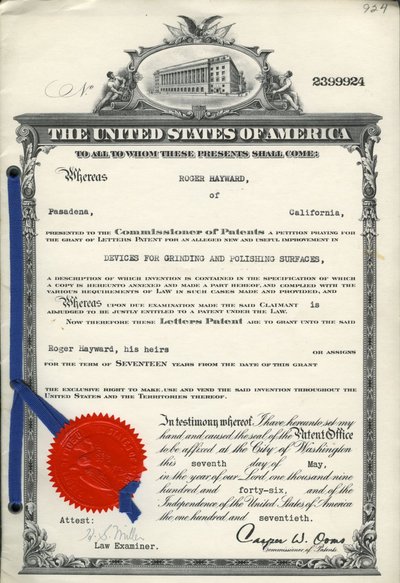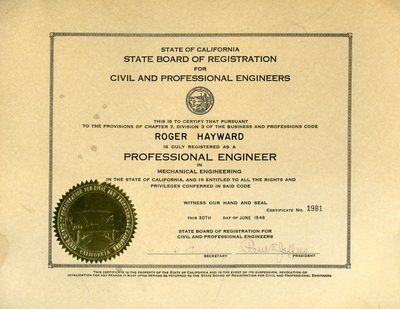After the conclusion of World War II, the Army Air Force established a new operations analysis organization so that commanders and staff could maintain ready and informal access to scientists and others with specialized training. An attempt was made to secure Roger for a permanent position in the Army Air Force, but the military was ultimately unsuccessful. Other organizations with special Army Air Force contracts, such as the University of Chicago, also tried unsuccessfully to recruit him for a full-time position as a senior staff member. By the end of the war, Roger was feeling an old pull towards the practice of architecture, but remained willing to contribute a substantial portion of his time, normally reserved for scientific endeavor, to contracted military service. He was eventually convinced to participate in an all-expenses-paid conference in Chicago and conducted limited contract work for the University of Chicago’s Ordnance Research Project.
Roger was officially commended at the end of the war, and he received letters of service and appreciation for his efforts from the U.S. War Department and the Office of Scientific Research and Development. While he maintained several of the friendships that began at Mt. Wilson for most of his life and spoke fondly of his experiences over the following decades, he felt that he was never really accepted as a colleague due to his lack of degrees and formal education, essentially making him a “non-person.” Such sentiments may have been a driving force in his eventual return to architectural work, where his official expertise was more openly respected and reinforced by his credentials.
Before jumping back into architecture, Roger had several bits of post-war business to address. In September of 1946, he acted as a consultant for Paramount Pictures to aid with the development of Television Air-Check Photography. He also spent a great deal of time pursuing patents from the optical work that he had conducted while at Mt. Wilson Observatory. Near the end of the war, he requested four patents for a surface generation apparatus and various optical devices, which he was eventually granted. Though he listed them with distinction in his credentials, Roger’s first patents turned out to be “practically useless” as they were difficult to enforce, and very little was generated in terms of financial gain.
Roger began working with Sam Lunden again in 1946, and together they constructed the Temple Israel in Hollywood in 1948. In 1949 Roger joined as a full partner with Lunden to create the Lunden, Hayward & O’Connor architectural firm. Shortly afterwards the firm completed a Veterans Administration hospital in Phoenix, Arizona - the first of the firm’s many post-war projects. Roger became registered as a professional engineer in the state of California towards the end of the decade and also became an artist consultant for the California Technical Institute, where among other projects he designed a book plate for the Ira Clokey Botanical Library.



